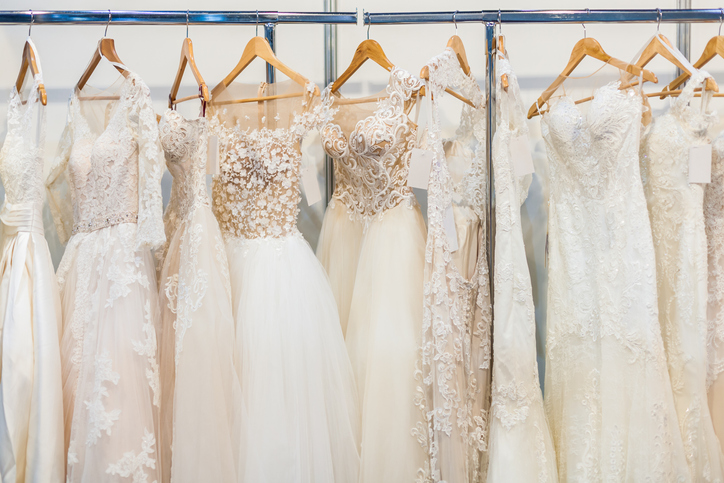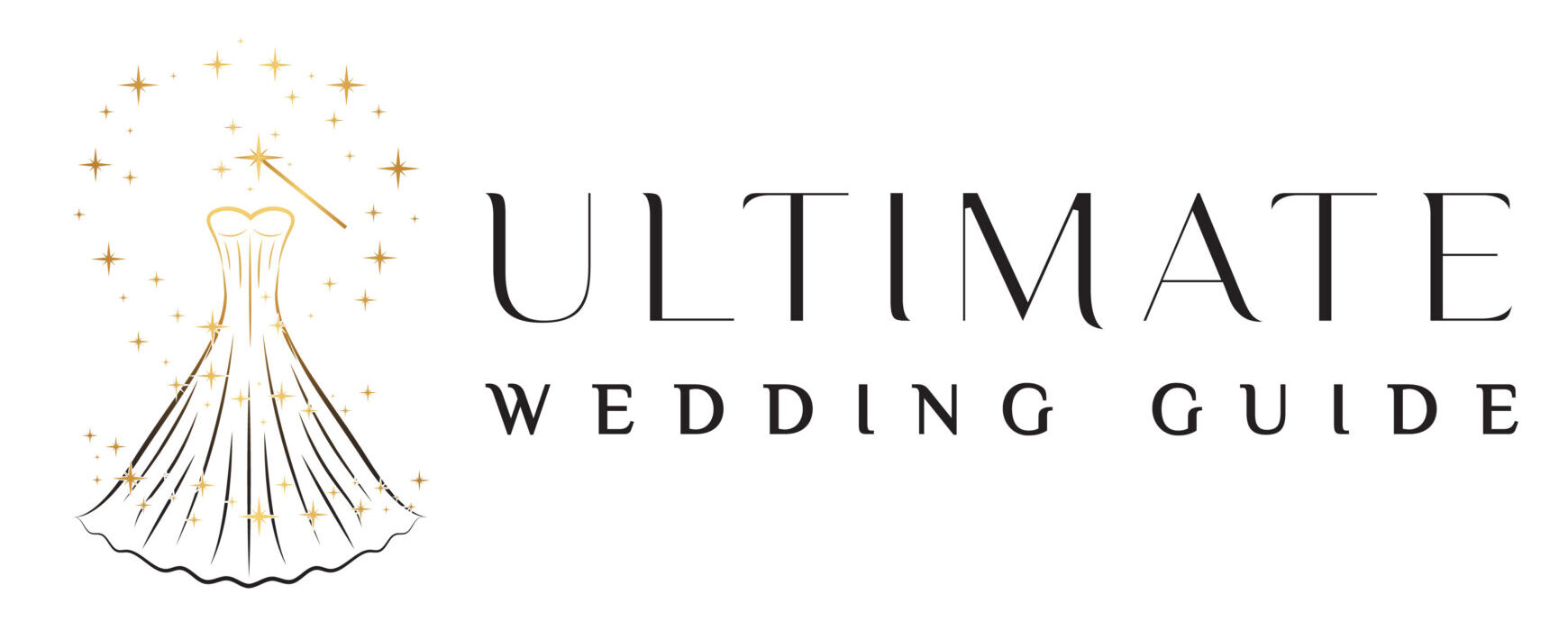7 Types of Wedding Dress Fabrics

Story time: Once upon a time, I went shopping for a bridesmaid dress and got overwhelmed when the sales person asked me, “what kind of fabric are you looking for?” “Do you like satin or chiffon?”
Truth is, my fabric vocabulary starts with cotton and ends in silk. I had no idea what she was talking about when she started listing a few different types of fabric. So naturally my response was, “uhhh I don’t know what fabric looks good on me but I like lightweight fabric.” (haha)
When shopping for a wedding dress, the fabric is so important. Some fabrics are heavier than others which means you’ll be warmer throughout the day. Fabrics should correlate with your wedding venue and weather. Although there aren’t official rules, it’s bizarre to see a bride in a velvet dress at the beach. But if that’s what you want to do, do it! No one is stopping you. It is your wedding.
So let me save your anxiety and help you understand fabric terminology. Pay attention and take notes, especially if you’re looking to make your own wedding dress.
Chiffon
On the lighter side of fabrics, chiffon is commonly used for an outdoor wedding as it is sheer, lightweight, and fluid. You will see the chiffon used as an overlay or in layers on skirts which gives a romantic and feminine look. It is made from woven silk which makes it delicate yet fragile.
Brocade
The brocade is a heavy fabric woven to create multitone design. It is either made out of silk or synthetic fibers. This type of dress was often worn by royal brides as it’s the perfect fabric or formal occasions. It is a little stiff so avoid this type of fabric for warmer seasons. If you’re having a hard time visualizing what this type of fabric looks like, most brocade wedding dresses are ball gown style.
Charmeuse
Charmeuse sounds like a luxurious name and it definitely appears so. It is a lightweight, rich and delicate fabric with a glossy look on the outside. One interesting thing about this fabric is that it’s usually cut on the bias – meaning, it’s on a 45 degree angle. This creates a soft drape, which accentuates body shape. Because charmeuse dresses are lightweight, they’re perfect for spring and summer weddings. Definitely gives off the sexy, summer vibe.

Satin
Satin can be made out of silk, rayon, polyester, or a blend of these. It has a glossy surface and a dull back. Surprisingly, satin is not a type of material. I definitely thought it was. Satin actually refers to the type of weave. You can wear satin all year round and with different types of dresses. One downfall is that satin does wrinkle – even for high end designer dresses. To test how much it wrinkles, grab a handful of fabric, clench your first for 5 seconds, and let go.
Silk
Silk is a natural protein fiber, produced from silkworm cocoons, that can be woven into textiles. Yes, I mean caterpillars. Silk can range from being the less expensive choice to the most expensive. However, they are generally on the more expensive end of the scale. It’s definitely a timeless, elegant, and versatile dress. If you’re the type of person that loves simple dresses, silk dresses are definitely for you!
Tulle
Whenever I think of tulle fabric, I think of ballerinas and their tutu’s. Tulle is an extremely lightweight, airy fabric that is either flexible or stiff. A flexible or soft tulle can be used for a veil. whereas a stiff tulle will be used in layers underneath a dress to create and hold form. If you are going with a tulle fabric for your wedding dress, be extremely careful since it snags easily. It may also be rough on your skin.
Velvet
I personally love the look and feel of velvet fabric. A white velvet wedding dress during winter is absolutely stunning. Velvet can be made from synthetic or natural fibers. It is a thicker material that is also very soft. If your wedding theme is regal or vintage, velvet is a great choice! I would strongly suggest choosing a different type of material if you’re having your wedding in summer or spring. If you were to wear a long velvet dress at an outdoor beach venue, you’d be sweating your life away.






You must be logged in to post a comment.